If you’re serious enough about photography to have invested in a DSRL, you’ll likely also want to get yourself an equally serious tripod. But with so many different tripods on the market, and by no means all of them up to the task of supporting a precious DSLR, it can be very difficult to work out which model to go for. In this short guide, I explain the most important points to consider when selecting a tripod for use with a Single Lens Reflex model, before going on to review a few of my current favorite top-rated tripods for DSLR cameras.
Choosing A Tripod for Your DSLR
With cameras, the differences in specifications between models are quite clearly labeled in terms of sensor size, megapixels, the number of AF points, etc., making it relatively easy to see which will be the best model for you. But with tripods, it can often seem like there is little difference at all between one that retails for $150 and another costing 5 times the price. How can you choose between them?
Let’s take a look…
Price
Beyond your camera and lenses, a tripod will probably be the most important photographic item you will ever purchase. It’s also likely to be one of the most expensive. This is true whether you invest in a top of the range tripod costing over $1,000, or go for the cheapest sub-$100 models you can find.
How so?
Well, I say this because budget tripods are always a false economy. And what usually happens is that you buy your nameless el-cheapo trash-pod, and it falls apart after just a few months (or even weeks!). Then, having learned the hard way that not all tripods are created equal, you end up buying a more expensive model anyway.
With tripods, you tend to get what you pay for. And unfortunately with cheap, badly-made tripods, what you’ve mostly paid for is misery. Avoid them.
A tripod worth owning will likely cost upwards of $300. Meanwhile, a tripod that will last a lifetime cannot be purchased for anything less than twice that. If not considerably more.
Tripod Head
When we think of a tripod, it’s usually the legs we have in mind. Sure, it’s important that your tripod legs are stable, and also long enough to give you the height you need. But as the part of the tripod where your camera will be attached, really it’s the tripod head you need to worry about. Indeed, this is where most problems can arise; the main one being a faulty locking mechanism that causes the camera to slowly slide out of position when in use.
In close second place for the title of Greatest Tripod Annoyance of All Time are locking mechanisms that, although they may grip nice and tight when closed, immediately let go of their hold the moment the lock is released. With no middle ground between locked and loose, it will be impossible to make micro-adjustments to the position of your camera without effectively having to start again each time. This can be very tedious.
A well-designed tripod head locks tight and stays there until you decide to adjust its position; at which point slowly releasing the lock will result in an equally smooth release of the locking mechanism. This will allow you to adjust the position of the camera without it suddenly nosediving forward from the weight of the lens.
Leg Locks
Tripods invariably have extendable legs. As mentioned above, as long as they are strongly built, there isn’t that much that can go wrong with the legs themselves. The locks that keep those legs in place once they are extended are another matter entirely though; badly-designed leg locks will make using your tripod nearly as frustrating as a badly-designed head.
In actual fact though, when it comes to leg locks, it’s not so much a question of good vs bad design. It’s more about personal preference.
Until a few years back, most cheap-to-mid-priced tripods used little wing-nuts to keep their legs locked in place. These were highly inconvenient to use and, in the case of total junk budget tripods, would often just fall off and become lost after a short while. Thankfully this style of lock has mostly gone out of fashion now and even the low-priced brands have adopted the same kinds of locking mechanisms used by the pro brands.
These largely fall into one of two categories:
– Manfrotto-style flip locks.
– Gitzo-style rubber ring locks.
In reality, both systems work very well. But this doesn’t stop most photographers from having a strong preference for either the one type of locking mechanism or the other. And what is certain is that, if you own a tripod with one type of lock but later discover that you actually prefer the other, you will find using your tripod to be a real chore. Before you spend your money, go to a store and check out both locking systems to see which works best for you.
Construction Material
Which is best? Carbon fiber or aluminum?
Well, that would depend. Good carbon fiber will undoubtedly be stiffer – and therefore stronger than aluminum, while likely also weighing considerably less. The problem is that not all carbon fiber tripods are made from good quality carbon fiber. Making things trickier still is that there’s no way for us as consumers to establish the quality of carbon fiber used by a manufacturer; if it’s a weak material, you’ll only find this out once it’s too late (i.e. when your camera is in pieces on the floor).
Having said this, generally today a carbon fiber tripod is going to be a better bet than aluminum. And having said that, really the differences between the two materials are not that huge, and any tripod from a well-known and reputable manufacturer will likely be strong enough for most photographer’s uses. As consumers, we can spend a lot of time worrying about these details, but in reality cases of tripod legs breaking or bending are rare, if not non-existent.
On top of this, aluminum will be cheaper. So if you find a tripod you like, at a price you are willing to pay and can live with its weight and all other design features, then just go with it; whatever the material.
Load-Bearing Capacity
Most top-rated tripods for DSLR cameras will be able to withstand the strain of even the biggest and heaviest professional Nikon and Canon bodies. Nonetheless, be sure to check that any tripod you are considering purchasing is rated to take the weight of the specific camera model(s) you intend to use with it. This is particularly important if you plan on buying anything marketed as a “travel tripod,” as these models tend to compromise on load-bearing capacity in order to keep the weight of the tripod down.
Extras
Central Column
In order to gain a little extra height without increasing the length of the tripod when folded away, many manufacturers add an extendable central column to some tripod models. Central columns simultaneously offer both certain advantages and disadvantages.
On the plus side, that extra foot or so of height offered by a central column can be very useful. Having a central column will also permit you to suspend the camera under the tripod for extra-low shots.
The only real downside to using a central column is that it will not be as stable as when mounting your tripod head directly onto the tripod. And the longer you extend the column, the more susceptible your camera will become to vibrations caused by the wind or passing people and motor vehicles etc.
Of course, a central column can be removed altogether if desired, so there’s no harm in purchasing a tripod with a central column and then taking it off the tripod later if you find that it doesn’t suit your photography. However, those on a budget will probably want to forego the column, as its inclusion can easily add up to $100 or more to the cost of the tripod.
Weight Hook
Carbon fiber tripods tend to be lighter than aluminum ones. If you’re the kind of photographer who often treks off into the wilderness with your camera and plan on taking along your new carbon fiber tripod too, that’s clearly good news for your back. However, as a heavier tripod will be less at risk from vibrations, the downside here is that an ultra-lightweight tripod is not necessarily the best choice when it comes to stability.
One solution to this problem is to travel light, and then add extra weight to your tripod once you arrive at your destination. For this reason, many tripods come with the option of hanging a bag or other heavy objects from a hook located under the head (or, if you have a central column, at the bottom of this column). If this is a feature that you think might be useful for your style of photography, check your shortlisted tripod models to make certain that they include a hook (however, often a hook can be purchased separately from the manufacturer at a later date too).

Image by Photo Mix from Pixabay
5 Best Tripods for Using with a DSLR
Having covered the main points to consider when purchasing a tripod, here’s my rundown of a few of the best tripods for using with a DSLR currently on the market.
1- Gitzo GT3542 Mountaineer Tripod Ser.3 4S
Although originating in France over 100 years ago, Gitzo is now owned by the same parent company as the Italian tripod brand Manfrotto, with both manufacturers continuing to produce excellent quality products. However, Gitzo has always been the superior of the two brands. And in fact, it is quite likely the creator of the best tripods ever made, both in terms of construction and design.
Gitzo’s tripods are supremely rugged and have clearly been designed with the practical needs of working photographers in mind. With its 8-layer Carbon eXact legs, magnesium chassis, and signature Gitzo G-lock leg-release system, the GT3542 Mountaineer does not deviate from this formula in any way.
An easily-extendable central column with a weight hook and quick-release leg-angle tabs make this tripod a pleasure to use in the field. Weighing just 4.8 lb but with a maximum load capacity of 31 lb, this is a tripod that will have no trouble taking the strain of even the heaviest Medium Format cameras, never mind DSLRs. Expensive, but likely the only tripod you’ll ever need to buy.
2- Really Right StuffTVC-33 Series 3 3-Leg Sections Mk2 Versa Apex Carbon Fiber Tripod
Really Right Stuff is the young upstart of tripod manufacturing. Yet while only on the scene for a decade or so, this made-in-the-USA brand has quickly established itself as a producer of very serious and hardwearing photographic support systems. Arguably many of their designs owe something of a debt to Gitzo, but in reality, that’s the case with almost every tripod manufacturer these days.
The TVC-33 is a solid-looking “table” of a tripod that is typical of the brand’s output; Gitzo-style twist locks, thick and sturdy carbon fiber legs featuring the distinctive Really Right Stuff “houndstooth” carbon patterning, and a maximum height of over 58”. Meanwhile, at 50 lb, this model’s maximum load capacity considerably outdoes even the Gitzo (above). In short, the RRS TVC-33 would be overkill even for a pro-level DSLR sporting a substantial front-heavy zoom lens.
3- Feisol Traveler 4 Section Carbon Fiber Tripod with CB-40D Ball Head
Taiwanese brand Feisol has been producing high-quality camera supports for almost 20 years now, and although the company’s products are not quite at the same level as Gitzo, they really aren’t a long way behind. What’s more, unlike many other Asian tripod manufacturers, Feisol has good European and North American customer service, providing prompt replacement of any faulty or damaged parts. This attention to customer care has gone a long way towards winning over photographers across the globe.
The 4-section Feisol Traveler is yet another Gitzo lookalike, only at a considerably lower price than the original. The legs release quickly and easily using G-lock style rubber rings, and the central column remains stable even when extended. Meanwhile, the CB-40D ball head operates super smoothly, locking firmly into position and then releasing very gradually to facilitate minor adjustments.
With a very similar load-bearing capacity to the Gitzo, yet a considerably greater maximum height (73.6”) than either the Gitzo or the RRS, Feisol’s Traveler is a fantastic option for either professionals or serious enthusiasts on a moderate budget.
4- Manfrotto MT055XPRO3 Aluminium 3-Section Tripod Kit w/ MHXPRO3W X-PRO 3-Way Head
Although in recent years even Manfrotto has succumbed to emulating Gitzo’s G-lock design on some models, the MT055XPRO3 instead opts for flip-lock levers – which some photographers may prefer. Likewise, the MHXPRO-3W foregoes the ball head favored by most tripod manufacturers these days, instead featuring a simple three-way levered design with rotating releases.
The maximum height here is almost equal to the Feisol above. However, at 17.6 lb, load capacity is considerably lower than any of the other tripods we’ve recommended so far. Not only this, but the tripod and head themselves are also fairly heavy, coming in at a combined weight of 7.7 lb.
5- Benro Travel Angel 2 Series Carbon Fiber Tripod w/ V1E Ball Head (FTA28CV1)
Like Feisol, Chinese Brand Benro has overcome its geographical origins to become a popular global brand with a strong presence in North America and elsewhere. Capable of handling a maximum load of 26.5 lb and with a fully extended height of 67.7”, with the Travel Angel 2 you get a relatively light and sturdy carbon fiber tripod that punches well above its weight. While many Benro tripods take a Gitzo-style approach to leg locks, the Travel Angel 2 takes the flip-lock route instead.
Meanwhile, the V1E ball head features a design that’s similar to the Feisol above, only with the addition of Benro’s P&T Safety System and some flashy blue metallic paint. The Travel Angel 2 is undoubtedly one of the better top-rated tripods for DSLR cameras currently available within this price bracket, and in general Benro’s products are competitively priced and well suited to use by the serious amateur.
Related posts:
Digital Camera Tripod- How To Choose The Right One
Manfrotto 190 Mt190xpro3 – Best Digital Camera Tripod
Thanks for reading, I hope you enjoyed the article if you have any questions just post them below & I will be happy to answer you.
If you enjoy the site, don’t forget to subscribe, we will only inform you when a new article is posted.
The featured Photo by Quang Nguyen Vinh from Pexels




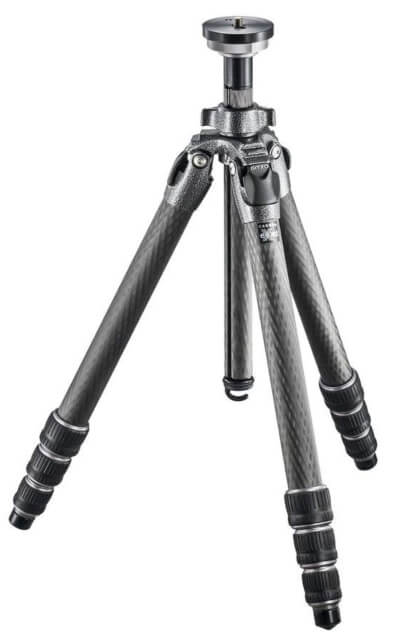
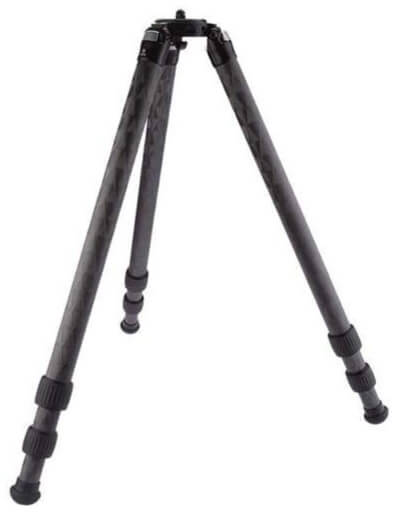

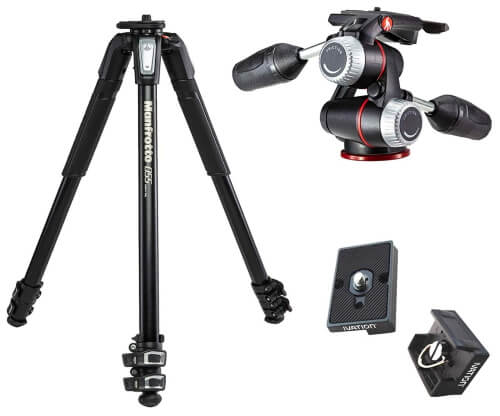
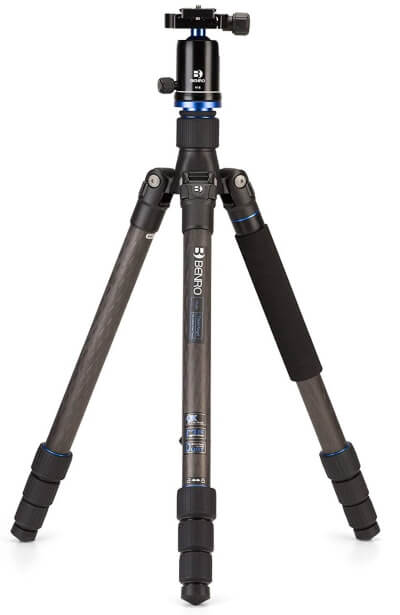

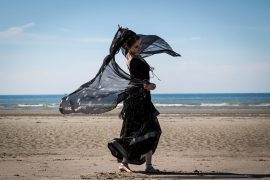




Hi there Ehab,
I loved your post. I should make it clear that i’m not a photographer, but it is an art that i really appreciate and want to learn. Sadly with my busy life at the moment it is not yet time to start.
This post on the top rated tripods for DSLR cameras is very informative. Frankly i had no idea that a Tripod could cost so much, but after seeing the high precision look of some of the tripods you have presented here i think i begin to understand why such high prices.
To me the Manfrotto MT055XPRO3 tripod looked the most impressive. Even though i realized that it’s not the most expensive one on your list. I guess i just liked how the head of that particular tripod looked.
I agree Manfrotto MT055 is a very solid tripd.
It turns out that it’s a technical task to choose a good tripod. There are so many points to consider. You must be a photography lover. I am not good at photography, and I learned some knowledge from your post. One of my friends loves photography. He told me he lacked a good tripod several days ago. I will share this article to him. Thank you
Thanks Jealous for dropping by.
Hi Ehab,
Many thanks for your research article on tripod tips that give me much knowledge. I want to buy it for my DSLR camera but I had not enough information before reading it. Reading your article now I am very much confident which tooltips are best for me. you have given pictures that are very effective for me to make a decision. I like your article very much and want to share it on my social media to help my friends because they want to buy it.
Tanks again for your nice post.
Your are welcome, glad that you liked the article.